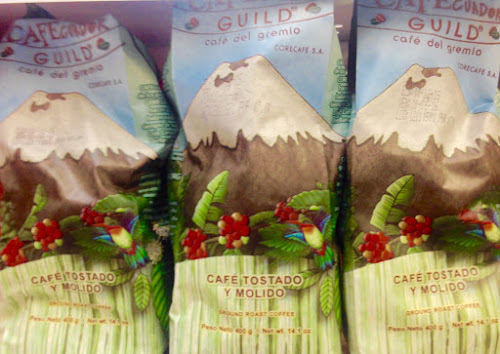Chimborazo, Cotopaxi, Cayambe. The furthest, the highest, the nearest.
They're all on prescriptions for celebrity, all seeking an oxygen of publicity. All volcanoes with a claim to fame. Volcán Chimborazo: the hill whose summit is further from the centre of the earth than the top of Mount Everest, this statistic the result of the equatorial bulge. In essence, the earth isn't a perfect spherical ball.
Volcán Cotopaxi: simply the world's highest active volcano.
And now I've discovered Volcán Cayambe. Whose summit is but a few metres from being dissected by Line 0°, making its rump the world's highest point on the equator. A schizophrenic hill, but not bi-polar, neither of the north nor the south, but out of both. Three volcanoes with deserved superlatives. The others scattered the length of Volcano Avenue have to be satisfied with donating their names to provincial governments, bags of coffee or instant credit shops. Some awaiting a return to notoriety and celebrity, that thin, seeping wisp of smoke; a warning. And if that isn't discouragement enough, Volcán Galeras is supposedly mined to dissuade the wayward wanderer.
Their near-perfect symmetry, unable to contain a sadness. I'm seeing them in the present tense, a single snap-shot of now. Yet grainy, sepia'd historical photographs are all too easy to find, and then it's all too easy to measure the shrinking depletion. The not so slow retreat. All are losing their caps of glacial ice. Some are in their death throes, impoverished, reduced to slivered remnants that cling onto the serrated mountain edge. Their diets, their sustainable wet season snows replaced by that thin gruel of rain. Some are accumulating melt-water lakes. Just one shake and the greater part of Ciudad Huaraz would be obliterated.
It's all happened before. 31st May 1970, was a festival day in Yungay. The local population swollen to four times normal. An earthquake dislodged a glacial serac, high up on Huascaran, that travels at 125 kph, gathering up a mulch of mud and stone, smothering the town and an almost unquantifiable 70,000 people. The site is now designated as a 'Pueblo Sepulchral', the new town resurrecting a short distance away. Yet what fascinates me, with all of these natural disasters, is how humans start to re-inhabit the devastated zones. Yungay has resurrected a couple of kilometres away, but already a school campus and a part-constructed hostel are encroaching that old avalanche path.
Yet, is it any different from the foxglove plant that's a primary coloniser after a woodland clear-fell or the fireweed that invaded the London blitz gap-sites? Or the property developer who plants executive homes on the River Tweed's flood plain?



